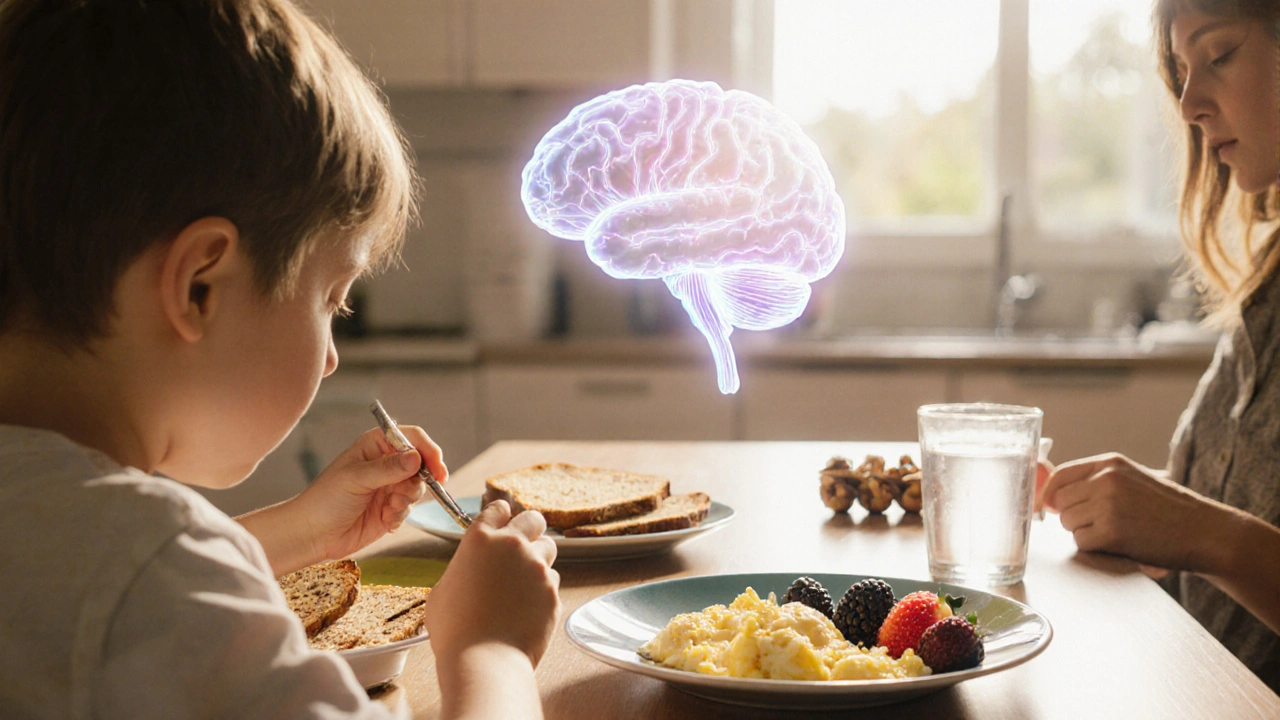ADHD Diet: Practical Nutrition Tips to Boost Focus and Energy
When looking at ADHD diet, a set of eating habits aimed at reducing symptoms of attention‑deficit/hyperactivity disorder. Also known as diet for ADHD, it focuses on stabilizing blood sugar, supporting brain chemistry, and improving overall health.
One of the first related ideas is nutrition, the process of providing the body with essential nutrients through food. Good nutrition fuels the brain, balances hormones, and can calm restless behavior. For people with ADHD, incorporating protein at each meal helps keep dopamine levels steady, which is crucial for attention.
Speaking of brain chemistry, dopamine, a neurotransmitter that regulates motivation, reward, and focus plays a central role. An ADHD diet often includes foods that naturally boost dopamine, such as lean meats, eggs, and legumes. By pairing these with low‑glycemic carbs, you avoid sharp spikes that can trigger impulsivity.
Another key player is omega‑3 fatty acids, essential fats found in fish, flaxseed, and walnuts that support brain cell membranes. Research shows omega‑3s can improve attention and reduce hyperactivity. Adding grilled salmon or a daily spoonful of chia seeds creates a simple, tasty way to meet the recommended 1,000 mg EPA/DHA intake.
While fats are important, sugar deserves a special mention. High‑sugar snacks cause rapid glucose surges, followed by crashes that worsen focus. Replacing candy bars with fresh fruit, nuts, or yogurt keeps energy levels even and reduces the urge to fidget. The principle here is simple: steady glucose equals steady attention.
Building an ADHD‑Friendly Meal Plan
Putting these concepts together, a practical ADHD meal plan might look like this: breakfast of scrambled eggs with spinach and a slice of whole‑grain toast, a mid‑morning snack of Greek yogurt and berries, lunch featuring grilled chicken, quinoa, and steamed broccoli, an afternoon handful of almonds, and dinner with baked cod, sweet potato, and a mixed green salad. Each component supplies protein, healthy fats, fiber, and micronutrients that collectively support brain function.
Micronutrients such as iron, zinc, and magnesium also matter. Low iron can impair dopamine synthesis, while zinc and magnesium help regulate neurotransmission. Including lean red meat, pumpkin seeds, and leafy greens ensures you hit these targets without relying on supplements alone.
Speaking of supplements, some families find that a targeted ADHD supplement regimen offers extra help. Common choices include high‑quality fish oil capsules, a multivitamin with zinc and iron, and, in some cases, a modest dose of L‑theanine for calm focus. Always consult a healthcare professional before adding any supplement, especially for children.
Hydration is another often‑overlooked factor. Even mild dehydration can lead to irritability and reduced concentration. Aim for at least 6–8 glasses of water daily, and consider herbal teas if plain water feels boring.
Meal timing also influences symptom control. Eating at consistent intervals prevents long gaps that cause blood‑sugar dips. Many parents report that a light snack before school or work helps maintain focus throughout the day.
Finally, lifestyle habits support dietary changes. Regular physical activity boosts dopamine release, improves sleep, and reduces stress—all of which complement the ADHD diet. Even a 20‑minute walk after lunch can make a noticeable difference.
All these pieces—balanced nutrition, dopamine‑supporting foods, steady glucose, omega‑3s, mindful supplementation, hydration, consistent meals, and movement—form a cohesive framework. Below you’ll find a curated collection of articles that dive deeper into each of these areas, offering detailed guides, recipes, and safety tips to help you craft an effective ADHD diet plan tailored to your needs.
How Diet and Nutrition Affect ADHD Symptoms: Practical Guide
- DARREN LLOYD
- 12
Discover how specific foods, nutrients, and eating patterns can ease ADHD symptoms and boost focus with practical, evidence‑based tips.
READ MORE
